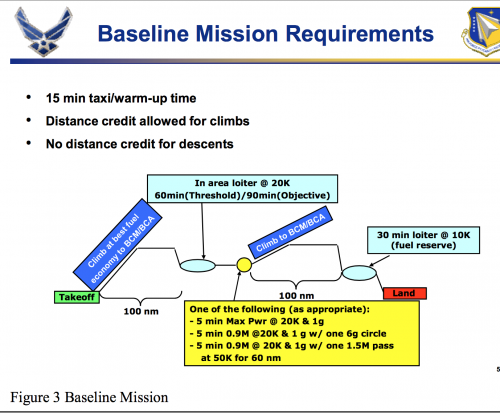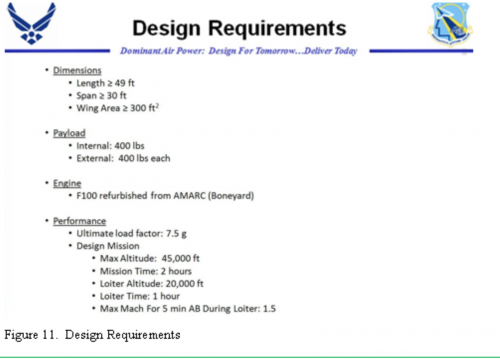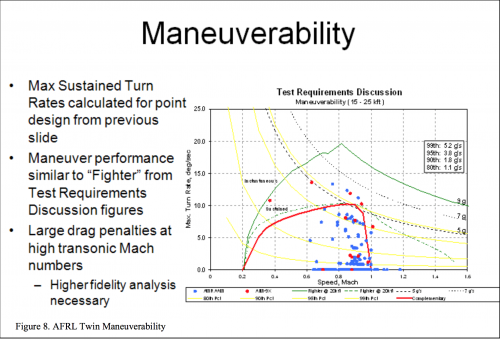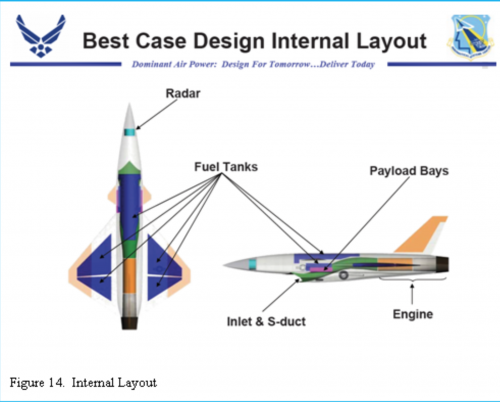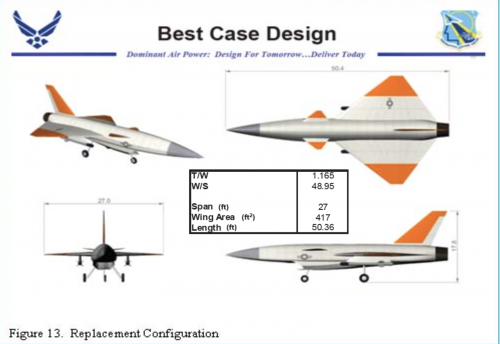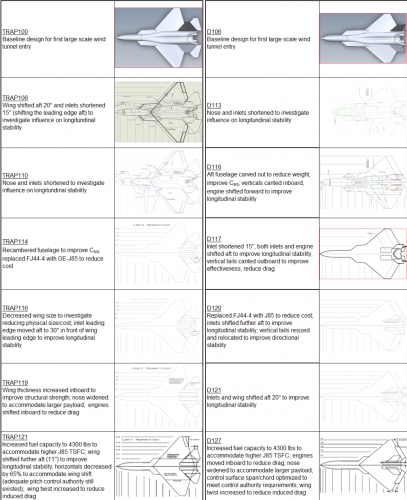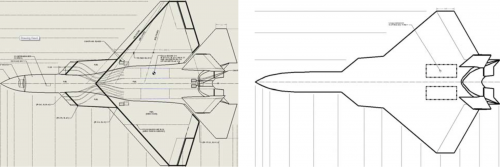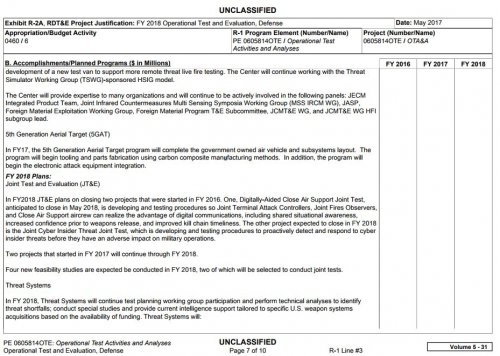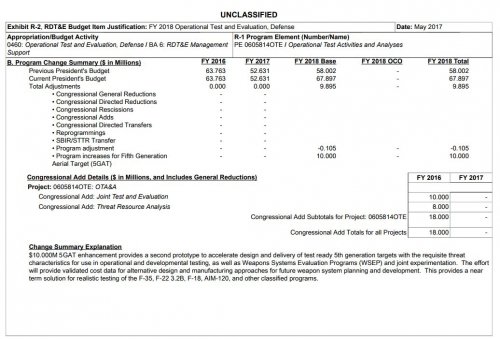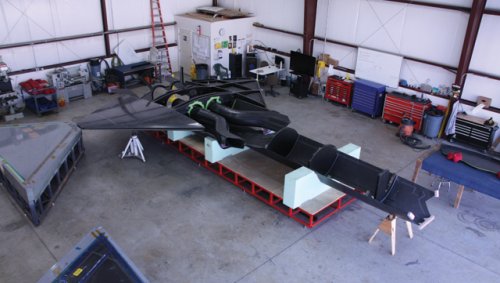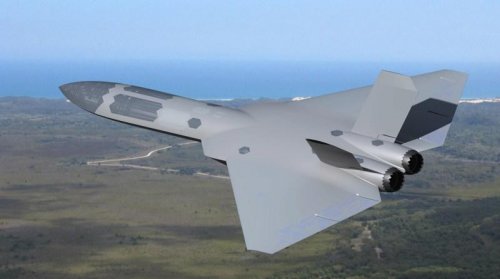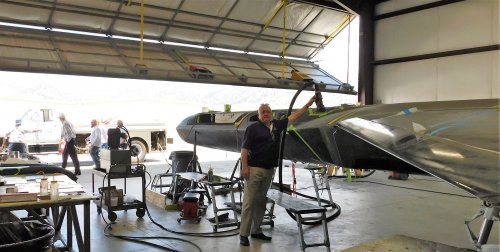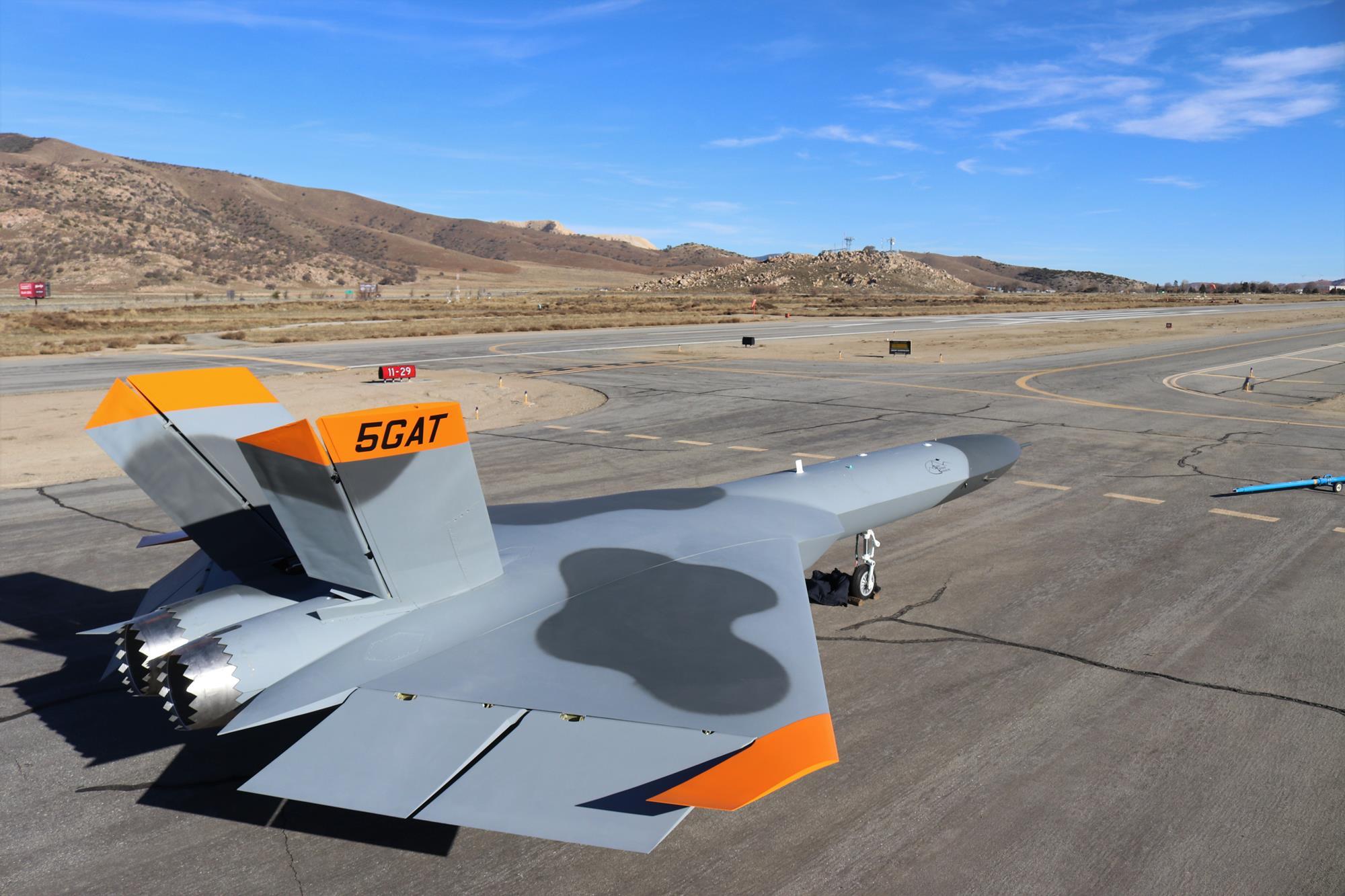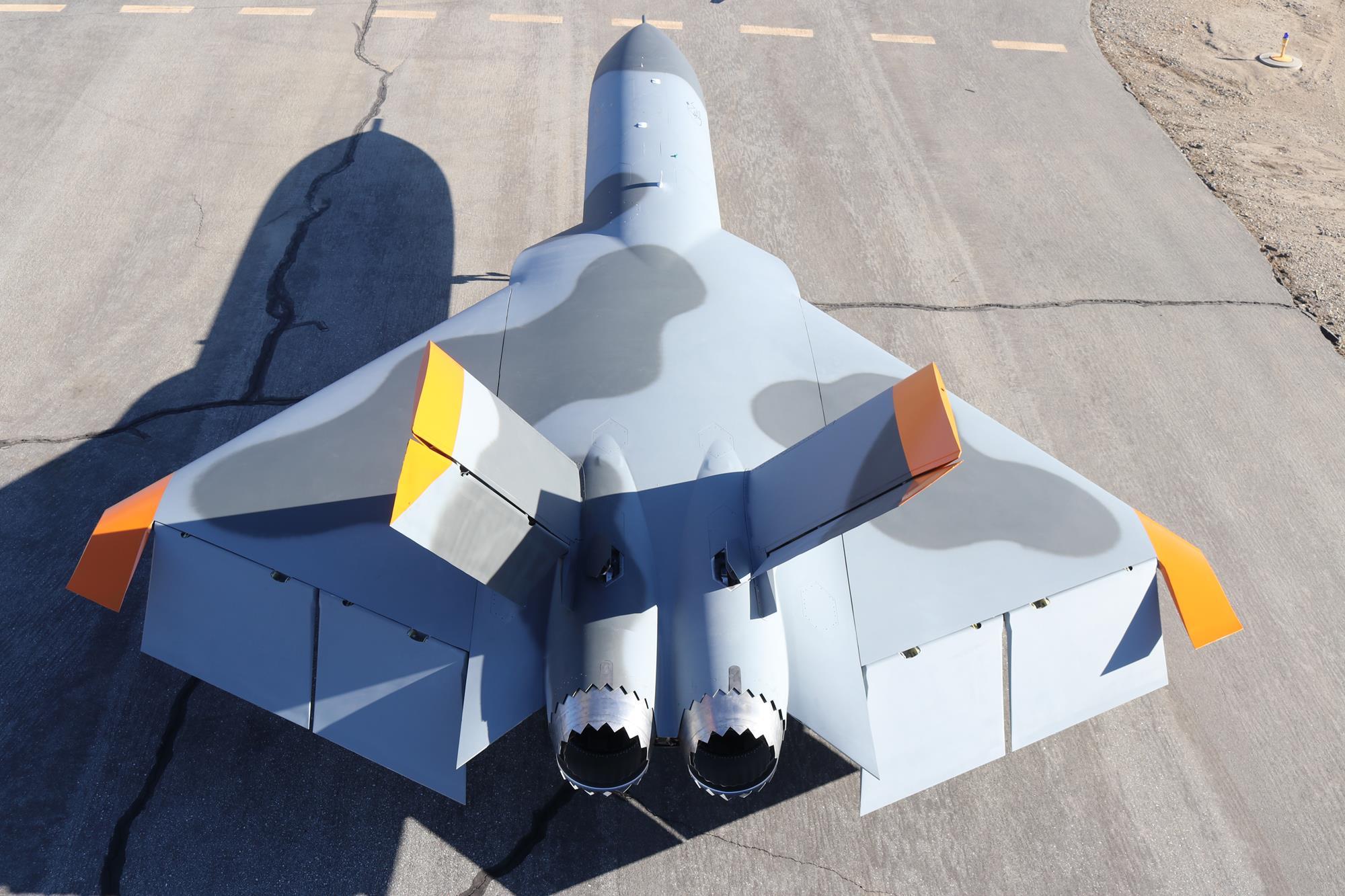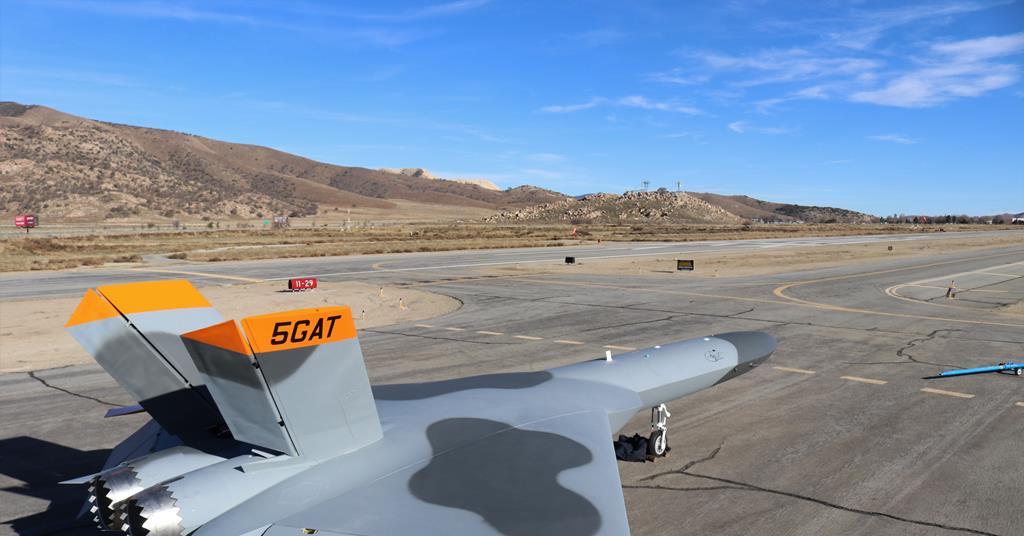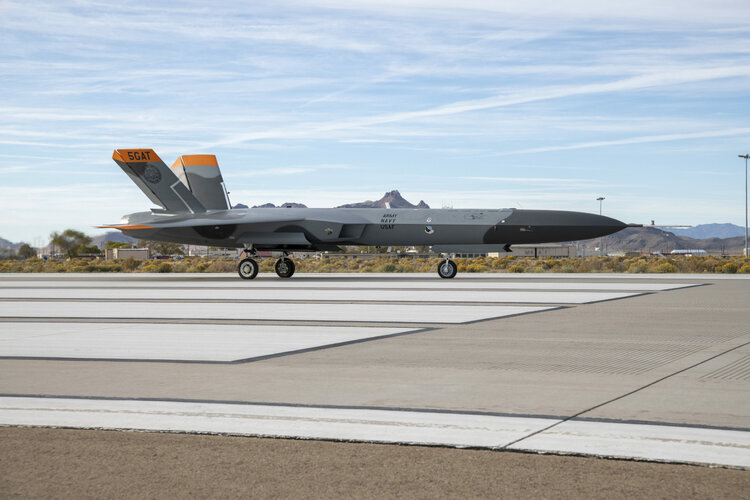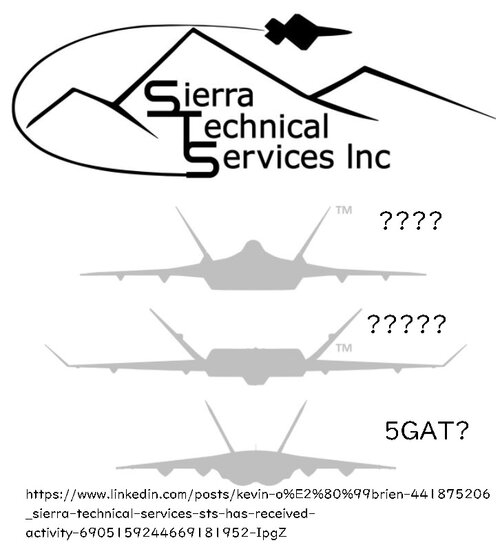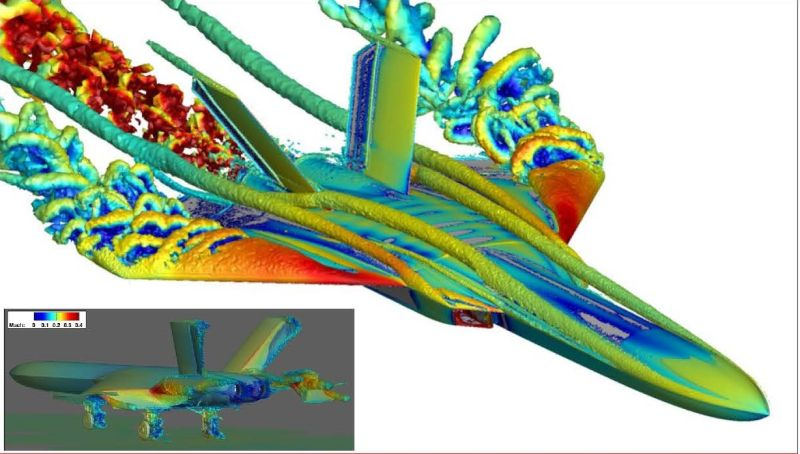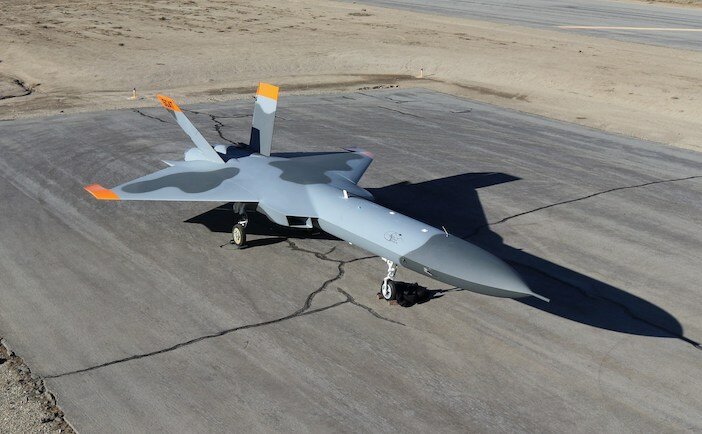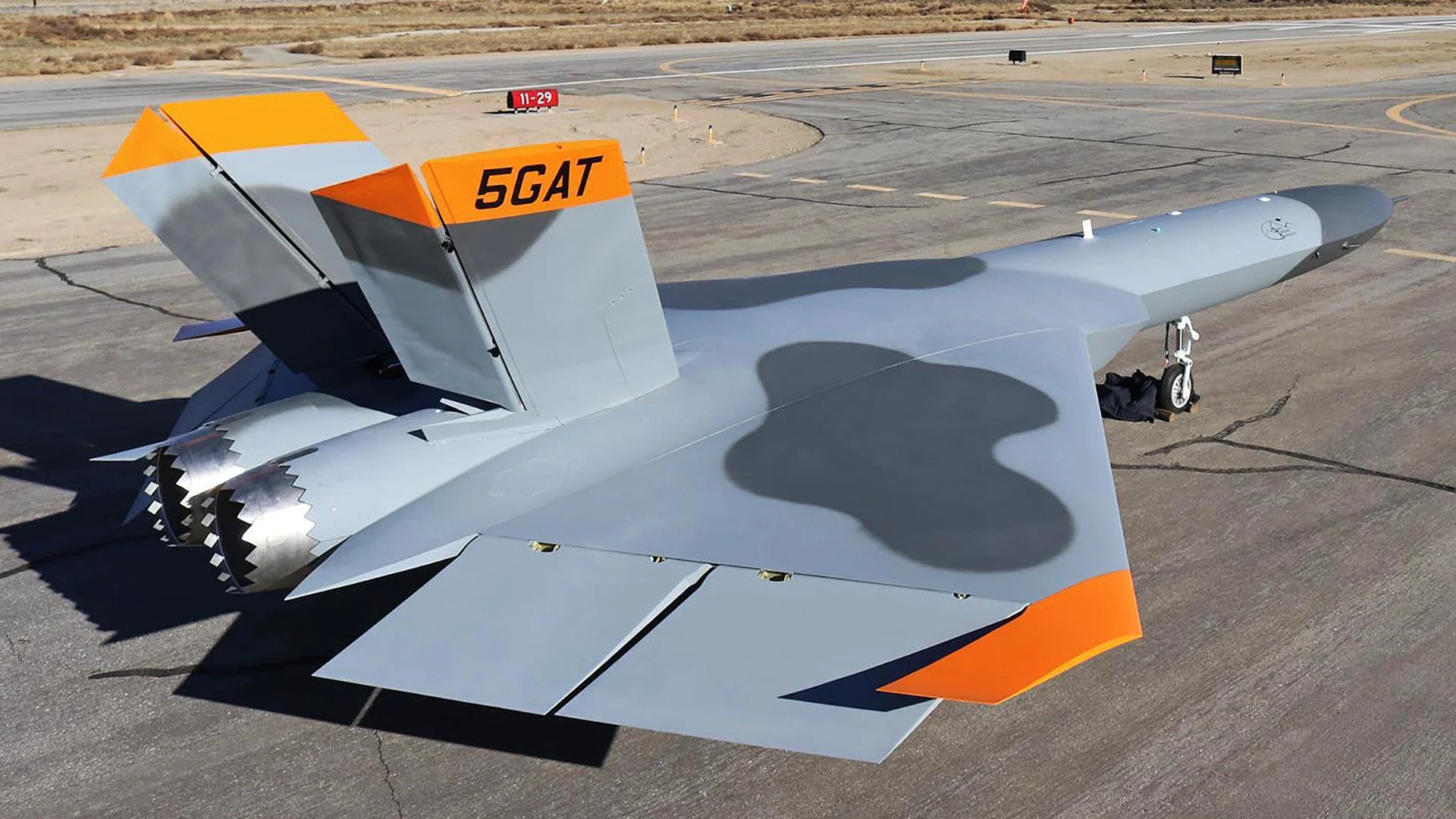he Pentagon’s Director of Operational Test and Evaluation (DOT&E) has revealed that the US Department of Defense (DoD) is advancing development and testing of a Fifth-Generation Aerial Target (5GAT) to replicate the stealth and performance characteristics of the latest Russian and Chinese tactical fighters
Two 5GAT prototypes have been funded, with flight testing planned to start in fiscal year (FY) 2019. Both the Unmanned Systems Division of Kratos Defense and Security Solutions and 5-D Systems have confirmed to
Jane’s
that they are under contract on the programme.
With the QF-4 target drone retired from use in 2016, the US Air Force is now using QF-16 full-scale aerial targets to emulate fourth generation air threats. However, the QF-16 – an unmanned remote-controlled conversion of the F-16 fighter – is unable to replicate the low observability characteristics of fifth-generation threat aircraft such as Russia’s PAK-FA and China’s J-20.
As a complement to the QF-16, the 5GAT will be a reduced signature platform, with internal carriage for advanced augmentation devices, to meet a requirement to represent fifth-generation threats.
Work on the 5GAT study effort began in 2006, with the programme examining the design and fabrication of a dedicated 5GAT that would be used in the evaluation of US weapon systems’ effectiveness. 5GAT will also be used to assist with future weapon system design/development, planning and investment, and future analysis of alternative activities.
DOT&E said that a 5GAT team, “comprised of air force and navy experts, retired [Lockheed Martin] Skunk Works engineers, and industry experts”, completed the preliminary design of the target vehicle in 2016. The fully-owned government design includes the aircraft outer mould line, internal structures, loads analysis, propulsion, and subsystems.
According to DOT&E’s 2017 annual report, the 5GAT effort “is currently building the first of two demonstration prototypes, including flight propulsion, system integration, and flight simulation/verification activities”.
It said, “The team built one full-scale, flight-representative wing that will be used for structural load tests and a system integration laboratory, as well as a full-scale test article for radar cross-section testing. The DoD provided additional funding in FY 2018–19 to complete the final design, tooling, fabrication, and flight tests (FY 2019) and to build a second prototype.”
The prototype systems will be used to demonstrate reduced signature, basic aerodynamic performance, alternative cost models for aircraft development, and provision for special mission systems.
Kratos is already well-known for its line of all-composite sub-scale aerial targets, and is also working on a number of tactical unmanned combat air vehicle projects. While the company had previously acknowledged classified contracts for a new high performance, jet-powered unmanned aerial drone system, it had not previously disclosed its participation in 5GAT.
5-D Systems is a software and systems group with a long pedigree in target systems. The company had previously worked with CEi – acquired by Kratos in 2012 and now subsumed into its Unmanned Systems Division – on 5GAT concept studies.
As well as providing a test asset for 5GAT performance evaluation, the prototyping effort is additionally promoting alternative design and manufacturing approaches for future air vehicle acquisition programmes, and providing verified cost data for all-composite aircraft design/development, alternative tooling approaches, and innovative management applications.

